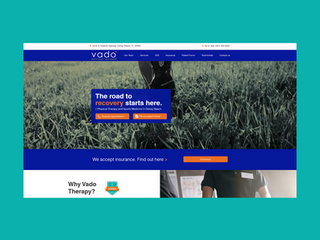web design for therapists is an essential component of creating an effective and efficient online therapy portal. With the right website design, a therapist can quickly reach out to potential clients who are looking for help with their mental health needs. A good web design should be user-friendly, visually appealing, and provide the necessary information about the therapist’s services.
Benefits of Having a Professional Therapy Site Design
Having a professional website design for a therapist can offer a number of benefits that can increase the visibility and success of their practice. With a well-designed website, therapists can easily showcase their qualifications, highlight their services, and even give their potential clients the opportunity to book an appointment or contact them directly. A great website design can also create a sense of trust with potential patients, making them more likely to follow through with appointments.

Creating an Engaging Visual Design
When creating a therapy website design, it’s important to keep in mind the importance of engaging visuals. A visually appealing design will draw people in, so it’s important to choose colors and typefaces that will make a positive impression on potential patients. The goal is to avoid colors and fonts that could be distracting or overwhelming. Also, it’s important to ensure that all images used are relevant to the therapeutic services offered and create a calming and soothing atmosphere.
Including Vital Information About Services
The website design shouldn’t just be visually appealing; it should also contain vital information about the services offered by the therapist. This includes information about different types of therapy offered, such as cognitive behavioral therapy (CBT) or family therapy. It should also include any specializations that the therapist may have, such as trauma therapy or eating disorder treatment. By providing this information, potential clients can get a better understanding of what services the therapist offers and determine if they are the right fit for their situation.
Incorporating a Client Portal
Another great feature to include in a therapy website design is a client portal. This allows existing and potential clients to log in and access their account. Through the client portal, clients can easily submit forms, pay for services, book appointment slots, view invoices, and communicate with their therapist. In addition, having a client portal makes it easier for the therapist to track patient progress and store important information in one place.
Providing Resources and Information
In addition to providing essential information about the therapist’s services, the website should also offer resources and information that can help those seeking mental health assistance. This could include blog posts, articles, helpful links, videos, and more. All of these resources can be used to educate the public about different types of therapy and make it easy for them to find the help they need.
Creating an Optimized Mobile Experience
Finally, when designing a website for a therapist, it’s important to ensure that it looks great and functions properly on mobile devices. As more and more people are using mobile devices to access the internet, it’s important to ensure that your website works across multiple platforms, including tablets and smartphones. If the website isn’t optimized for mobile devices, potential clients may not even be able to access the site, which could lead to lost business.
With the right website design, therapy professionals can easily reach out to potential clients and provide them with the resources they need to make informed decisions about their mental health. By following the tips outlined above, therapists can create a website that is both visually appealing and functional, giving clients the ability to quickly and easily find the help they need.

